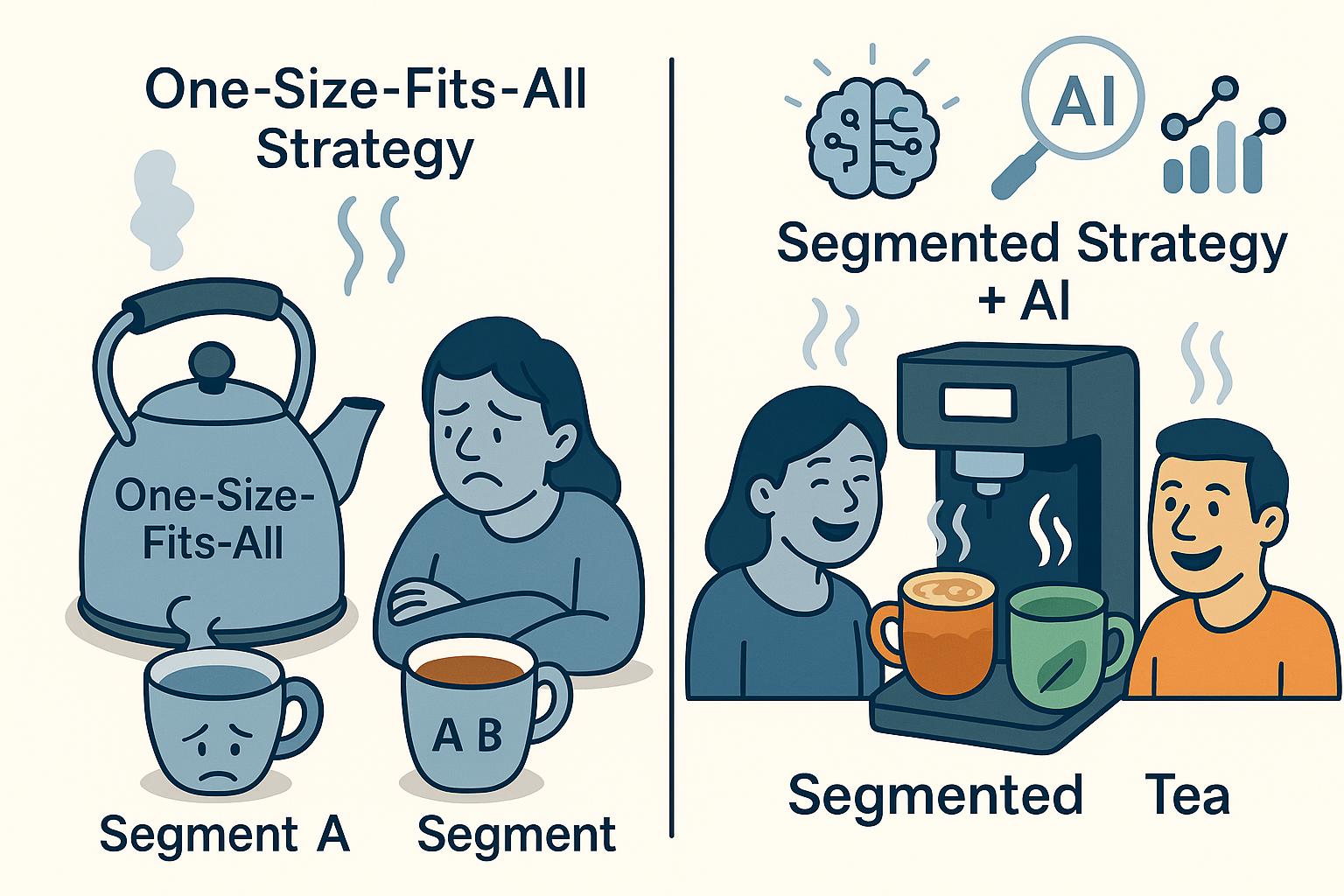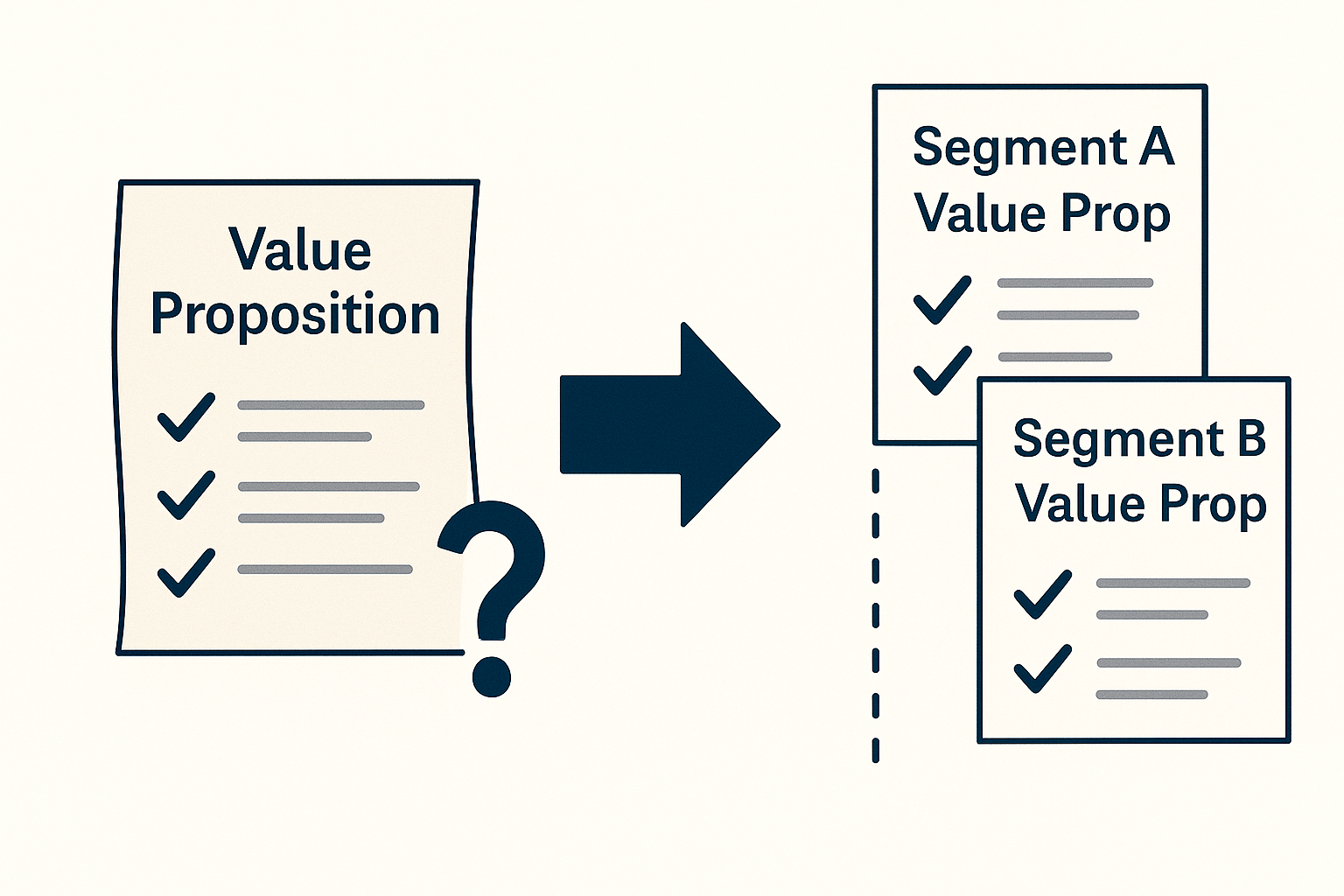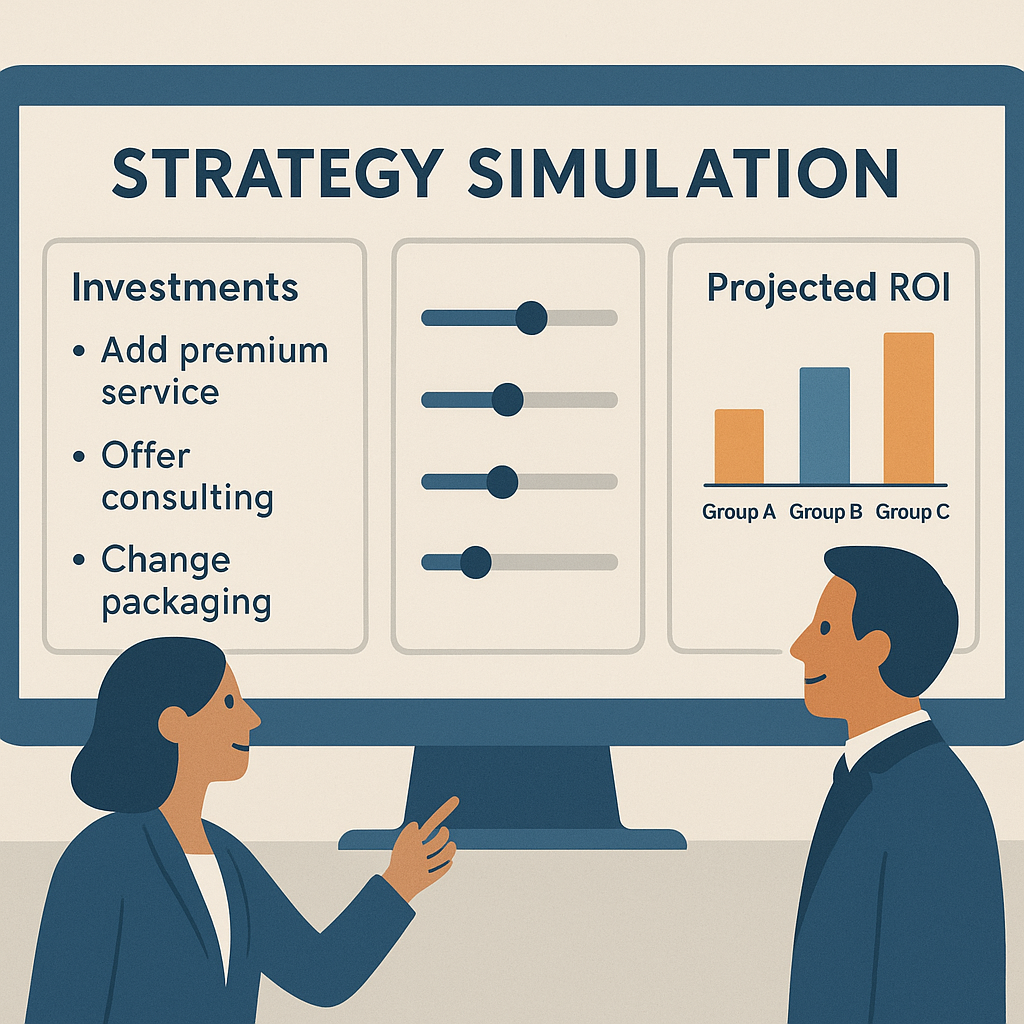Strategy Fatigue is real—but the right strategic tools, powered by AI, can help you differentiate what you deliver and prove it pays.
1. Why Value Props Go Lukewarm — Even in Great Strategy Work
We’ve seen it over and over: after days of customer insight, segmentation, and advantage analysis, a team gets to the final task — defining their value proposition — and simply runs out of gas.
We’ve seen it over and over: after days of customer insight, segmentation, and advantage analysis, a team gets to the final task — defining their value proposition — and simply runs out of gas.
It’s understandable. Crafting a differentiated value prop that fits each segment feels like one more heavy lift. And so, despite all the hard work up front, the final output often flattens into something generic. Something that could apply to any segment… or worse, every competitor.
We’ve called this “strategy fatigue” in the context of positioning. It’s just as common — and just as costly — when it comes to value propositions.
2. The Lukewarm Tea Problem
A few years ago, we coined the term lukewarm tea to describe this dynamic: when a company uses needs-based segmentation but delivers one-size-fits-all offers, customers feel like they’re sipping the same bland brew as everyone else.
They know their needs are different. If your offer doesn’t reflect that, your competitors will. The point of segmentation is to treat different customers differently — and that doesn’t stop at messaging. It must extend to what you actually deliver.
A compelling example comes from a chemical company that sold the same core product — literally the same formula — to two different segments: independent potato farmers and a powerful sugar cooperative. But everything surrounding the product changed: the packaging, delivery model, payment terms, and even the product name. One offer felt full-service and empowering; the other was bare-bones and priced accordingly. That’s segment-specific value delivery.
3. How AI + the Right Strategic Tools Unlock Better Value Props
So why is segment-specific value so hard to deliver in real time?
Because when you’re exhausted, creativity fails. And because great value props — the ones that balance customer desires with economic logic — require both inspiration and discipline.
That’s where AI, combined with the right strategic tools, is rewriting the rules:
- It removes the creative burden. When prompted with your customer segments, strategic advantages, and benefit preferences, AI (trained within your strategic framework) can instantly suggest segment-specific value props — including differentiators across service, delivery, and information layers.
- It simulates the payoff. Want to know if investing in that new service layer is worth it? The right tools, powered by AI, can simulate market impact and help approximate a business case.
- It prevents over-offering. By asking, “what parts of our current offer are wasted on this segment?”, you can more confidently de-feature — improving margins without damaging value.
4. Your Best Value Proposition Might Be Simpler Than You Think
Another powerful use of AI + the right strategic tools? Pressure-testing how the market will perceive your offer — and how a competitor’s next move might affect your position.
When a client recently asked, “If our biggest rival adds this new feature, what should we do?” — AI and the right tools helped them model the impact before reacting. The result: they avoided an expensive arms race and found a smarter way to differentiate.
The Bottom Line
Great value propositions are tailored, tangible, and tested. But too often, teams let the fatigue of strategy development flatten the final step.
By combining AI’s creative power with the right strategic tools, you can build value propositions that are truly segment-specific — and smart enough to pay off.

 Mary Abbazia
Mary Abbazia Tom Spitale
Tom Spitale Sean Welham
Sean Welham

